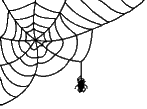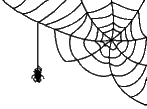|
|
| Author |
Message |
| stinkwheel |
This post is not being displayed .
|

stinkwheel
Bovine Proctologist

Joined: 12 Jul 2004
Karma :    
|
  Posted: 19:57 - 17 Mar 2005 Posted: 19:57 - 17 Mar 2005  Post subject: Relays. How to. Post subject: Relays. How to. |
  |
|
Relays- How to
Introduction-What is a relay?
A relay is a type of electromagnetic switch. When power is supplied to a relay a small metal terminal on a spring is attracted towards an electromagnet, this causes the terminal to either make or break a different circuit.
Relays are usually used to switch power on and off to a componant that has a high current draw using a lower current. This is often for the simple practical reason that a higher current means you need thicker wires and a heavier duty switch. A relay allows you to use a small (and therefore cheaper) switch and thin wires to control a large current with the thicker wires being hidden or routed somewhere more practical.
Relays can also be used singly or in combination as a type of basic computer to control logic circuits (for example if you wanted a light to come on only if two switches were pressed together). This is used less in motorcycles but does occur, for example the system that stops the starter motor working unless the bike is in neutral or the sidestand is up and the clutch is in is relay controlled.
For logic junkies
IF neutral=1 OR (clutch=1 AND stand=1) THEN starter=1 ELSE starter=0 ENDIF
When should I use a relay
They would usually be used when you have added an accessory to your bike which draws more current that the original was designed to or if you want to add electrical parts which have no existing wiring without interfering with the standard wiring loom. Some common examples include adding a high powered horn where the existing wiring is too thin for the current draw or something like a GPS system where you want it to switch on and off with the ignition.
So what are the different types?
Some relays have a built-in fuse holder for the “supply” side, this prevents the wires melting or catching fire if an excessive current draw is experienced for some reason. It is can be better to use an “inline” fuse elsewhere in the circuit instead of a fused relay as they are often located in a hard to reach place.
There are three main types of relay, a standard relay is fine for most aplications. There are also “micro” relays for use when space is at a premium and “high current” relays to cope with large amounts of draw, it is unlikely that a high current relay would be necessary on a motorcycle. Another special type of relay which is designed to cope with very high currents is the solenoid, these are only usually used for starter motors.
Some relays have a diode built in to the “switching” side to prevent current flowing back along the earth side, these would only be used for special applications.
There are many different types of relay on the market, the simplest is called a “4-pin” or “single throw” relay. When you apply a voltage across two of the pins, a circuit is made between the other two.
https://www.bikechatforums.com/files/relay1.jpg
There are also three types of “5-pin” relay which are:
Change over where current is supplied to one terminal at rest, when you apply power to the relay, the current is changed over from this pin to another one.
https://www.bikechatforums.com/files/relay2.jpg
Double make and break When power is applied to the relay, current is supplied to two separate pins.
https://www.bikechatforums.com/files/relay3.jpg
Twin make and break When power is applied to the relay, current is supplied to two linked pins.
https://www.bikechatforums.com/files/relay4.jpg
So how do I use them?
Firstly there is a universal system for numbering the terminals on relays as follows:
85 = “switching” voltage, this is usually the low current side coming from your switch, all this current is powering is a small electromagnet and as such requires only a light-duty switch and thin wiring.
86= Earth for the “switching” voltage.
30= The “supply” voltage, this is where the power for whatever you are controlling with the relay goes in, it is the high current side. The wire thickness should be appropriate for whatever current you expect the output device to draw.
87= The “output” pin(s). This supplies the power coming from the relay to your output device. At rest (ie when no “switching” voltage is present) there is no power supplied to this terminal. There can be more than one of these, in which case they are linked together.
87a= On some relays there is an additional output pin, at rest, power IS supplied to this terminal.
87b= An additional output which works in the same way as 87 but is not connected to it when at rest.
Decide what you want to do and write it down, a good example would be fitting a GPS to your bike so it only comes on when you switch the ignition on. A flow chart is a good way to visualise this:
https://www.bikechatforums.com/files/flow1.jpg
There is only one input and one output so you will only need a single throw relay. Now consider what the input needs to be, you want a wire that is on only when the ignition is on. You could find this at the ignition switch but this is bound to be a crowded area to start with, less wiring or hidden wiring is better. So how about at the fuse box? Well this is good too but most bikes use connector blocks which are difficult to tamper with. What about the supply to the rear brake light switch? This would be good, it is out of the way and only requires you to replace a single terminal with a double one.
Next step is to draw a circuit diagram, MS paint is excellent for doing these. You will be taking the power for the GPS direct from the battery, so draw that in, you will also need a fuse so either use a fused relay or put an inline fuse somewhere near the battery. Next you need the relay so draw that in. The power supply attaches to pin 30, power out attaches to pin 87 so draw a wire between here and the GPS. The GPS also needs and earth connection, you can either use a frame earth or connect this back to the battery negative. Now the switching current, coming from the brakelight switch supply so draw a wire from here to terminal 85. Finally the earth from the switching current so connect 86 to earth.
https://www.bikechatforums.com/files/gpswire.jpg
Now all you need to do is wire it all up. Remember to use the correct thickness of wire and to fix the terminals on properly. How to join wires tutorial
Now a more complex example This is where someone wanted to wire up two sets of spotlamps, one to come on with the dip and one to come on with main beam. In this case it makes sense to use the existing wiring that goes to the headlamp and the existing switches on the bike. The back of the headlamp casing should have enough room for the relays so again let’s draw a flow chart.
https://www.bikechatforums.com/files/flow2.jpg
As you can see, we have two switches here, the ON/OFF has one possible output so this is a case for a simple single throw relay so draw it on, power in to 30 through a fuse, power from “on” to 85. In reality this would probably be best to come from the terminal normally connected to the ‘dip’ filament of the headlamp. As you can see on the flow chart, the output from this switch goes into the next switch so we are going to connect 87 on this relay to 30 on the next one.
Right, second switch has one of two possible outcomes with power going to one place or the other. This will need a five pin relay. Since we want power to one or the other it will have to be a “change over” relay. We will use the wire normally connected to the beam fillament as a ‘switcing’ current. If there is no power going to beam, it is safe to assume we want it to be going to dip as the first relay has already decided we want the lights to be on so connect pin 87a to the dipped lights. When beam is switched on the relay changes the power over to terminal 87 so connect this to the high beam lights. Now draw in the earths.
https://www.bikechatforums.com/download.php?id=8587
All that is left is to wire it up.
____________________
“Rule one: Always stick around for one more drink. That's when things happen. That's when you find out everything you want to know.”
I did the 2010 Round Britain Rally on my 350 Bullet. 89 landmarks, 3 months, 9,500 miles. |
|
| Back to top |
  |
You must be logged in to rate posts |
|
 |
| mchaggis |
This post is not being displayed .
|

mchaggis
World Chat Champion

Joined: 09 May 2004
Karma :    
|
  Posted: 20:15 - 17 Mar 2005 Posted: 20:15 - 17 Mar 2005  Post subject: Post subject: |
  |
|
Excellent stuff as ever.  
____________________
I must not be a troll...
Mmmm, Guinness
Discovering the delights of Hammerite and a 3/4" brush.  |
|
| Back to top |
   |
You must be logged in to rate posts |
|
 |
| Odie |
This post is not being displayed .
|

Odie
World Chat Champion

Joined: 24 Jul 2004
Karma :   
|
|
| Back to top |
   |
You must be logged in to rate posts |
|
 |
| Ian (GPX) |
This post is not being displayed .
|

Ian (GPX)
Brolly Dolly

Joined: 05 Aug 2003
Karma :  
|
|
| Back to top |
   |
You must be logged in to rate posts |
|
 |
Old Thread Alert!
There is a gap of 5 years, 353 days between these two posts... |
 |
|
| Howling TerrorOutOfOffice |
This post is not being displayed .
|

Howling TerrorOutOfOffice
Super Spammer

Joined: 05 Dec 2008
Karma :    
|
|
| Back to top |
   |
You must be logged in to rate posts |
|
 |
| lllN30lll |
This post is not being displayed .
|

lllN30lll
World Chat Champion

Joined: 12 Jun 2005
Karma :   
|
|
| Back to top |
  |
You must be logged in to rate posts |
|
 |
| Howling TerrorOutOfOffice |
This post is not being displayed .
|

Howling TerrorOutOfOffice
Super Spammer

Joined: 05 Dec 2008
Karma :    
|
|
| Back to top |
   |
You must be logged in to rate posts |
|
 |
Old Thread Alert!
The last post was made 14 years, 290 days ago. Instead of replying here, would creating a new thread be more useful? |
 |
|
|

































 rating
rating rating
rating